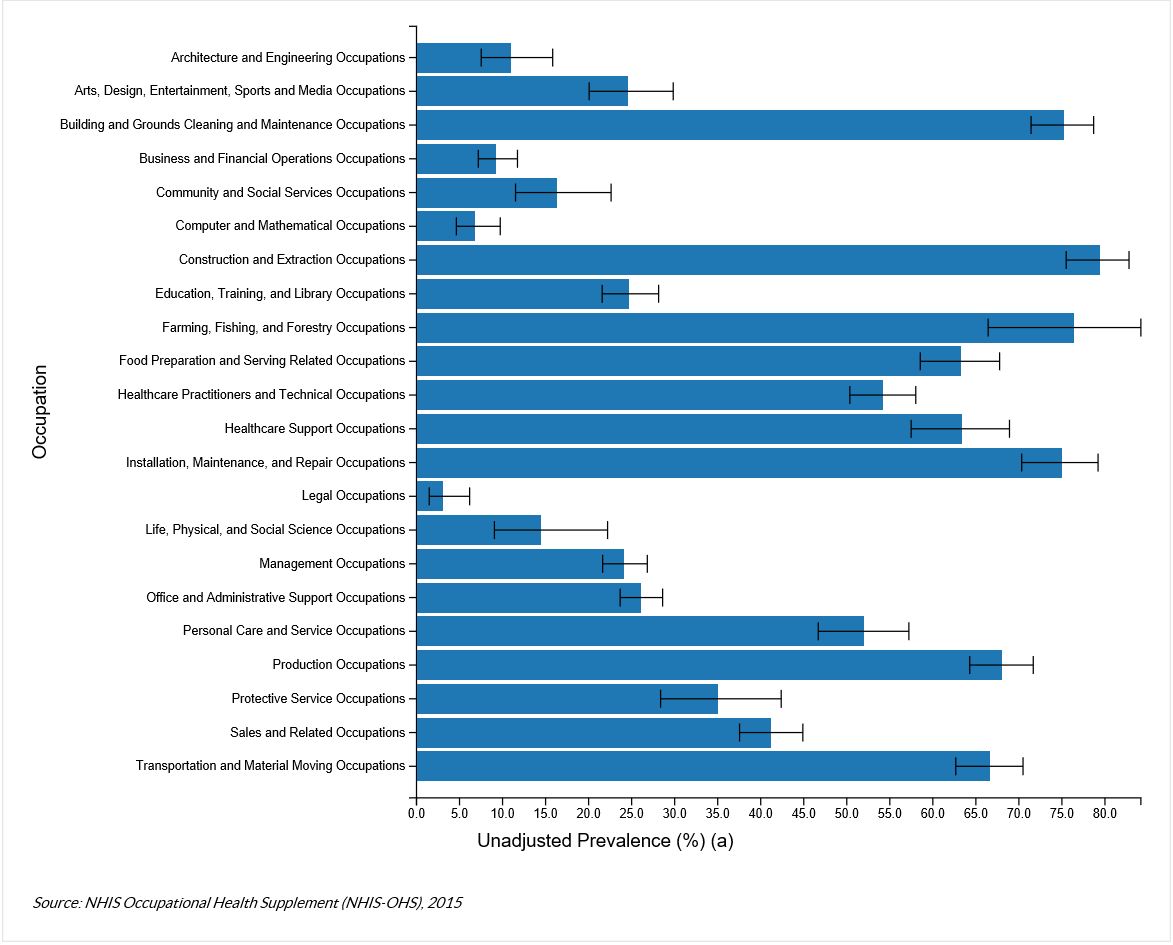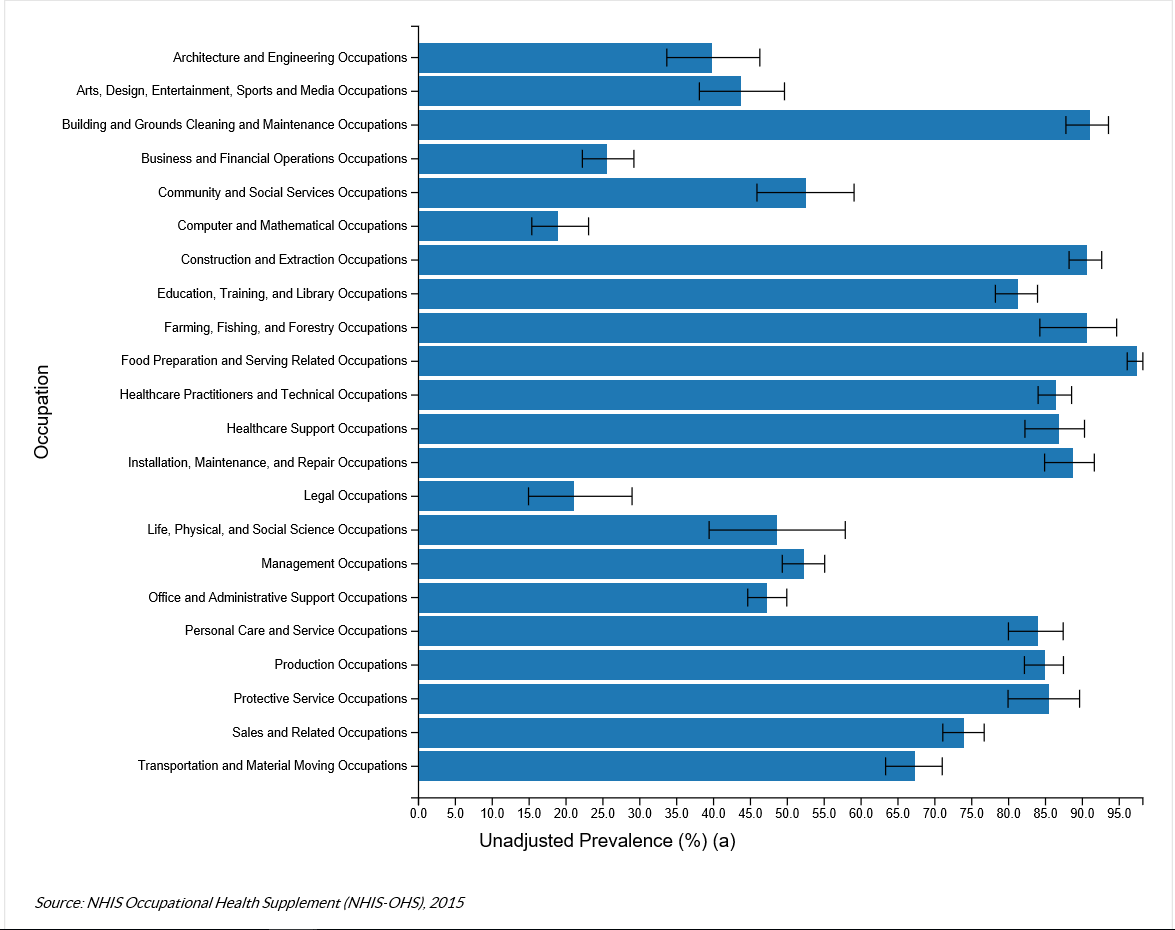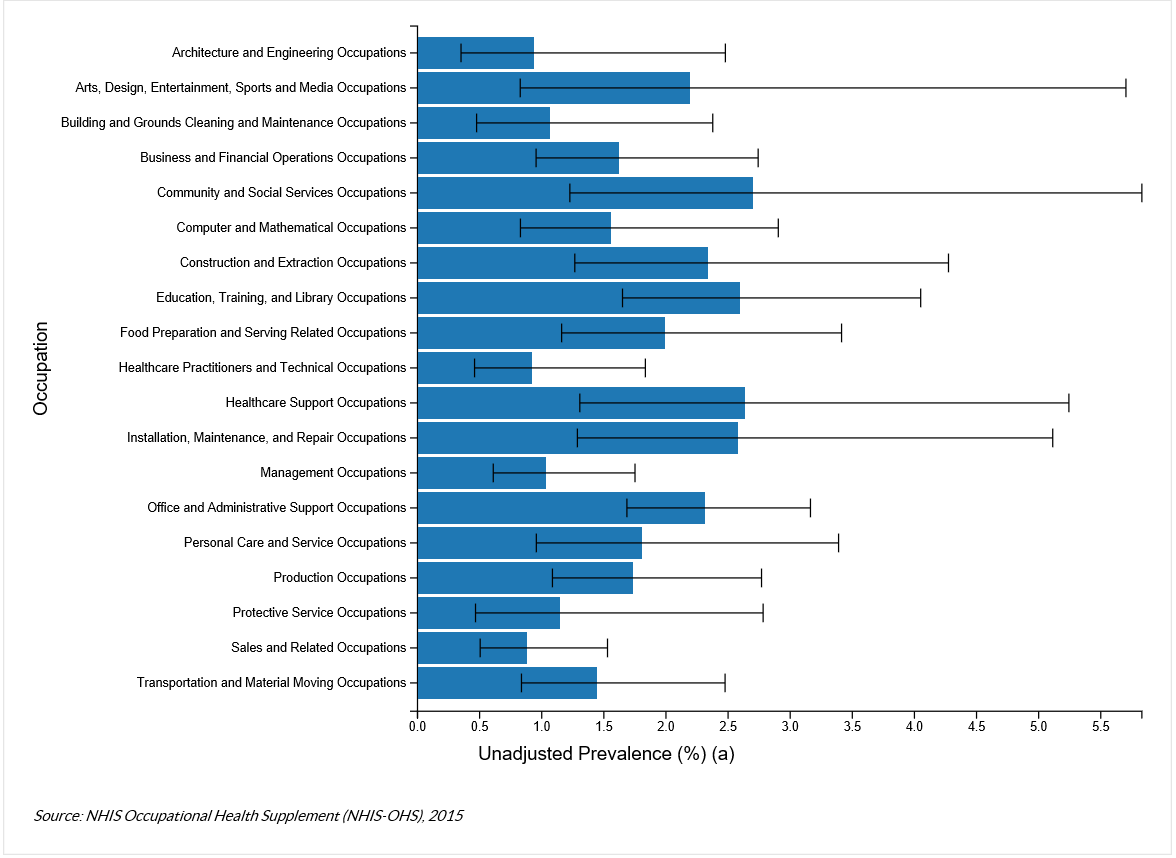module list
ELEMENTS OF ERGONOMICS PROGRAMS
Step 1: Identify Risk Factors
Learn who is at risk for Work-related Musculoskeletal Disorders (WMSDs)
Incidents of possible WMSDs are either isolated to a particular job/task or widespread, affecting multiple departments. Records of complaints and injuries are often enough to reveal the scope of a WMSD problem.
Table 1.1: How to Look for Records of WMSDs
| Where to Look | What to Look For |
|---|---|
| Company OSHA Form 300 logs Workers’ compensation claims | Specific cases, such as carpal tunnel syndrome or tendinitis. Nonspecific cases, such as hand/wrist pain or back pain |
| Records of worker complaints | Complaints of undue stress, localized muscle fatigue, discomfort, pain that does not go away after rest |
| Records of workers visiting the clinic | Mentions of physical aches and pains related to certain types of work assignments |
| Job task evaluations, job safety analyses and job hazard analyses | Job tasks involving repetitive and forceful exertions, frequent/heavy/overhead lifts, awkward working positions, or use of vibrating equipment |
| Company policies and directives | Evidence that job/task modifications (like increasing line speed) were proposed specifically to increase worker output and overall productivity |
| Trade publications | Evidence of WMSDs in the field |
OSHA logs and company medical records are readily available to most employers. These records can be used to calculate incidence rates (i.e. new cases) and prevalence rates (i.e. new and old cases) of MSD problems, which come in handy for step 3. Organizations that have identified possible WMSDs should contact NIOSH for a Health Hazard Evaluation (HHE). Please visit Health Hazard site to learn more about HHEs.
Click here to search for examples on HHE reports on Musculoskeletal Disorders. Possible key words to search for include ergonomic, or musculoskeletal disorders.
Learn about workplace conditions that put you at risk for WMSDs
Workplace conditions contribute to physical and psychological stress and can negatively affect the musculoskeletal system. Physical stress comes from the force, repetition and postures required in job tasks. Practical Demonstrations of Ergonomic Principles (2011) states that there are neutral postures, awkward postures, and static postures. When your muscles and joints are resting and relaxed you’re in the neutral posture. Awkward or unnatural postures require more and more exertion from your muscles, tendons, nerves and bones as movements reach the limits of the range of motion and can lead to MSDs. Also, if you maintain the same position, even in a neutral posture, for an extended period of time, this static posture can cause additional muscle fatigue and disrupt blood flow.
Psychosocial stress results from work organization factors (e.g. fatiguing workload, repetitiveness, lack of job control, and extremely high or low mental demand, low job satisfaction), factors outside the workplace (parental responsibilities), and individual worker factors ( e.g. genetic factors, educational status, culture, and personality traits). The table below provides a list of risk factor conditions that contribute to WMSDs. In a job task there can be more than one of these risk factors present (e.g. the Awkward Postures image includes contact stress, poor shoulder/wrist posture and excessive force while pushing).
Table 1.2: Examples of Risk Factor Conditions
| Risk Factor Conditions | Illustrations |
|---|---|
| Awkward Postures | 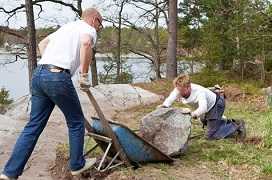
|
| Overhead Work | 
|
| Twisting and Carrying Loads | 
|
| Wrist Deviations | 
|
| Contact Stress | 
|
| Poor Shoulder/Wrist Posture | 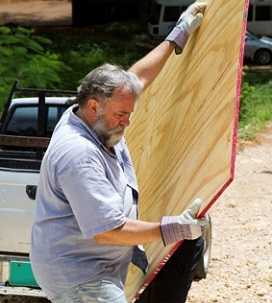
|
| Lifting Bulky Loads | 
|
| Hand-Arm Vibration | 
|
| Whole Body Vibration | 
|
Learn what jobs put you at risk for WMSDs
To identify specific jobs or job tasks that put workers at risk for WMSD problems, you need to lay the groundwork for early intervention and WMSD prevention. A single job setting may present more than one risk factor for WMSDs. Your level of risk for developing WMSDs depends on the intensity, frequency, and duration of your work tasks. The U.S. Bureau of Labor Statistics provides data on occupations with physical requirements. These requirements may become risk factors for MSDs if your work includes high intensity, frequency, or duration. The Occupational Requirement Survey grades work-related strenuousness at five levels: sedentary, light, medium, heavy, and very heavy. Table 1.3 summarizes the data from the U.S. Bureau of Labor Statistics’ Occupational Requirements Survey.
The NIOSH Worker Health Charts below are based on the National Health interview Survey (NHIS) data from the 2015 Occupational Health Supplement. Each figure contains an occupations’ estimated prevalence with a 95% lower and upper confidence limit. All the figures are unadjusted prevalence rates, with no adjustment for age, sex, and race. The figures are as follows:
An estimated 60,471,000 (out of 145,777,000) U.S. adults experience frequent lifting, pushing, pulling or bending job tasks, with an average prevalence of 41.48%.
An estimated 97,314,000 (out of 145,818,000) U.S. adults experience frequent standing or walking, with an average prevalence of 66.74%.
An estimated 8,274,000 (out of 147,742,000) U.S. adults were affected by low back pain, with an average prevalence of 5.68%.
An estimated 2,445,000 (out of 145,699,000) U.S. adults were affected by carpal tunnel syndrome, with an average prevalence of 1.68%.
Table 1.3: Common MSD Risk Factors Associated with Various Work Settings
| Work Settings | Potential Risk factors |
|---|---|
| Architecture & Engineering |
|
| Arts, design, entertainment, sports and media |
|
| Building and grounds cleaning and maintenance |
|
| Business and financial operations |
|
| Community and social services |
|
| Computer and mathematical |
|
| Construction and extraction |
|
| Education, training, and library |
|
| Food preparation and serving related |
|
| Healthcare practitioners and technical |
|
| Healthcare support |
|
| Installation, maintenance, and repair |
|
| Legal |
|
| Life, physical, and social science |
|
| Management |
|
| Office and administrative support |
|
| Personal care and service |
|
| Production |
|
| Protective service |
|
| Sales and related |
|
| Transportation and material moving |
|
Learn specific MSDs with their risk factors
NIOSH 1997 Publication Musculoskeletal Disorders and Workplace Factors: A Critical Review of Epidemiologic Evidence for Work-Related Musculoskeletal Disorders for the Neck, Upper Extremity, and Low Back reviewed specific MSDs in relationship to risk factors from literature reviews. During that time MSDs were reported in five separate body regions (neck, shoulders, hands/wrist, elbow, & low-back). The table below provides risk factors known at that time to be strong or some evidence contributing to those specific MSDs.
Table 1.4: The Type of MSDs’ Risk Factors
| Type of Musculoskeletal Disorder | Risk Factor(s) |
|---|---|
| Neck MSD |
|
| Shoulder MSD (shoulder tendinitis) |
|
| Elbow MSD (Epicondylitis) |
|
| Carpal Tunnel Syndrome (CTS) |
|
| Hand/Wrist Tendinitis |
|
| Hand-Arm Vibration Syndrome |
|
| Low-Back MSDs |
|
Use checklists
Use checklists to formally screen job features against a list of risk factors. Walk through work facilities and conduct an observational survey. Observe several workers performing the same job task at the same time, to record how different workers choose postures and techniques. Interview workers and supervisors, and be sure to only gather data from those who are familiar with the job, task, or process you are investigating.
These NIOSH checklists are available for your use:
- Ergonomic Hazard Identification Checklist
- Workstation Checklist
- Task Analysis Checklist
- Hand tool Analysis Checklist
- Materials Handling Checklist
- Computer Workstation checklist
- Protocol for video recording jobs for risk
- Ergonomic Guidelines for Manual Material Handling
- Practical Demonstrations of Ergonomic Principles: Mining Publication
No checklist can fit all situations. You will need to customize your checklists for different job tasks or types of work. Checklists may be combined later to assess the extent of identified WMSD problems. Checklists reveal signs of individual WMSD problems that may share the same underlying cause. Use the findings from your checklists and observations of the work environment to brainstorm initial ergonomic solutions. Sometimes the solution to an WMSD problem is simple and doesn’t warrant a full-blown intervention.
Follow up on checklist observations by using additional data collection methods:
- Measure job task and job cycle time-motion patterns
- Measure workstation layouts
- Measure tool handle sizes, weights, and vibration levels
- Measure workers’ exposure to whole-body vibrations
- Measure workers’ exposure to hot/cold conditions
- Measure workers’ physiological and biomechanical responses to work
More details on measuring tools are provided at the end of Step 3.
- Page last reviewed: July 18, 2017
- Page last updated: September 15, 2017
- Content source:
- National Institute for Occupational Safety and Health Division of Applied Research and Technology


 ShareCompartir
ShareCompartir
